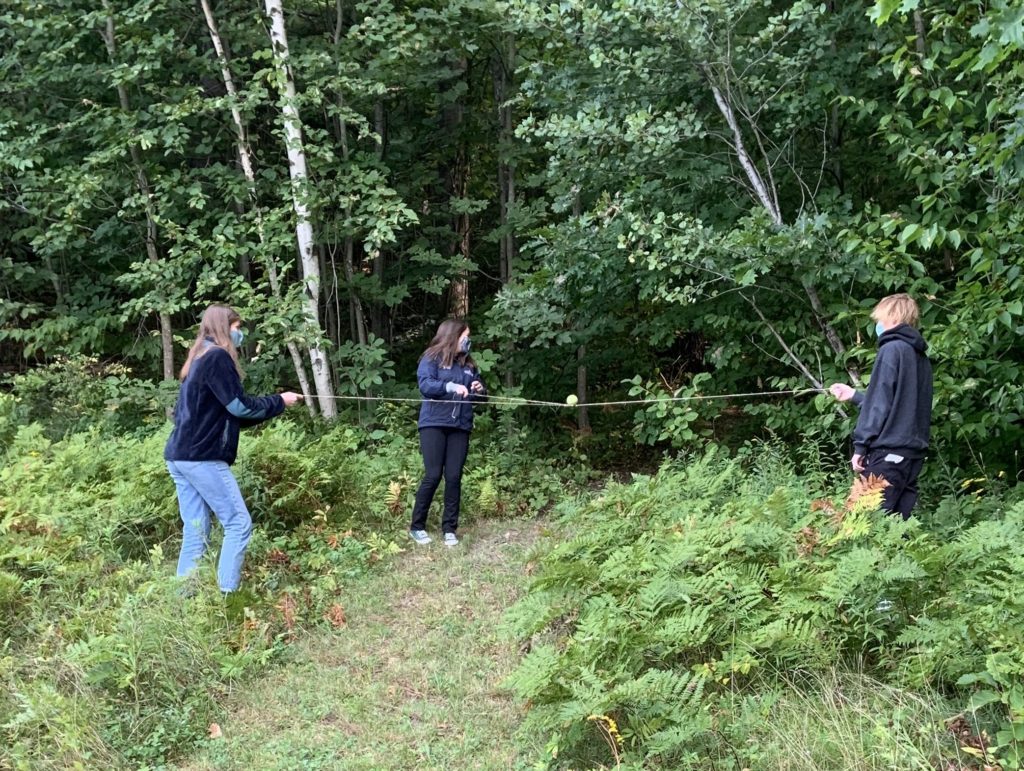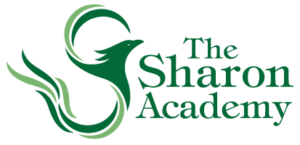Collaboration in Science

A tennis ball, a steel ring, and a ball of twine. These were the tools given to students in Rob Stainton’s Environmental Science class before they hiked into The Sharon Academy’s 80-acre forest behind the High School to conduct the first class activity of the year.
Although this wasn’t a traditional science lab, it was the perfect initial activity for the Environmental Science class, because of the amount of collaboration it required. “Every assignment in my Environmental Science class requires collaboration and teamwork,” explained Stainton, the Chemistry and Environmental Science teacher at TSA. “This ‘Moving the Ball’ activity was designed to require students to plan, develop, and build a design, and execute their plan in a collaborative manner.”
For the activity, students were divided into small groups and given the task of moving a ball from the parking lot to a clearing in the forest behind the school. First, however, they had to learn the restrictions. They could not touch the ball directly while they moved it. The ball needed to remain resting and free-standing on the steel ring. They could not touch the ring. All of the students in the group needed to be a part of moving the ball. Each individual had to remain six feet away from all others because of COVID-19. With the rules established, the groups were set loose to accomplish their goal. Importantly, students also had to figure out what to do when the plan fell apart, or what to do when faced with obstacles—in this case, trees.
Although these lessons will be immediately applicable to Stainton’s science class, he is quick to point out that these skills are essential throughout the sciences and throughout life. “To many people, science looks like an individual scientist working in a lab somewhere. In reality, science looks much more like teams of people working together.” And because those teams can include people from across the globe, it is essential for student-scientists to learn how to communicate and collaborate at the same time as they are learning scientific method and scientific content.
At The Sharon Academy, these skills of collaboration and communication are an essential part of the curriculum, with students being assessed on these “21st Century Skills” along with content knowledge. “Students need to be able to practice these essential skills,” asserts Stainton.
And if you need more proof of how essential those skills are, just think about what is happening with scientists working together across the globe to find a COVID-19 vaccine. Scientific knowledge is what will make it possible to create a vaccine. Collaboration and communication are what will make it happen quickly and effectively.
